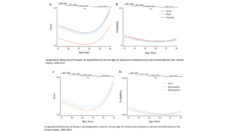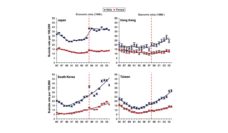Congress has allowed the federal minimum wage to erode over time. When the federal minimum wage was established in 1938, Congress agreed to regularly update it to account for inflation. But most recent Congresses have failed to live up to this charge. In 2018, the federal minimum wage of $7.25 was worth 15% less than when it was last raised in 2009. The current federal minimum wage is almost 30% less than it was in 1968, when the minimum wage was the equivalent of $11.15.
The federal minimum wage is not a living wage. Twenty-two states, largely the poorest states, only require that their workers are paid the federal minimum wage contributing to widespread poverty. The adults in an average American family of four (two adults, two children) need to work nearly two full-time jobs each (a 77-hour work week per adult) at the federal minimum wage to feed, clothe, house, and provide medical care for their families.
The American working class is facing substantial economic hardship, and this sustained stress has contributed to the rise of “deaths of despair.” Deaths of despair are deaths from drug poisonings, excess alcohol use, and suicide, and they are associated with job loss, debt, and financial hardship. Increasing the minimum wage is a potential pathway to prevent deaths of despair.
John Kaufman and colleagues examined the relationship between suicide and minimum wage in the US from 1990 to 2015. This study focused on people with a high school education or less because this group is likely to be working at or close to the minimum wage. Changes in the minimum wage affect many low wage workers, not just those working at minimum wage.
Raising the federal minimum wage will not only improve quality of life. It will save lives.
The researchers estimate that each one-dollar increase in the minimum wage is associated with a 3-6% reduction in suicides among people with a high school education or less. According to this estimate, a one-dollar increase in the minimum wage above prevailing levels could have prevented 27,550 suicide deaths from 1990 to 2015. In the same time period, a two-dollar increase could have prevented 57,350 deaths.
The unemployment rate affects the relationship between minimum wage and suicide. When unemployment is high (>6.5%), higher minimum wages are strongly associated with lower suicide rates. At very low unemployment (<3.8%), there is no relationship between minimum wage and suicide. The researchers speculated that increased demand for workers during times of low unemployment means that workers can negotiate for higher pay regardless of the minimum wage.
Researchers have proposed several mechanisms by which increasing the minimum wage could improve mental health. Higher wages could make it easier for workers and their families to seek out mental healthcare. Substantial increases in pay could improve job satisfaction, and job satisfaction improves worker health.
Raising the federal minimum wage would increase income for up to a quarter of American workers. American families simply cannot live on the federal minimum wage. Raising the federal minimum wage will not only improve quality of life. It will save lives.
Photo via Getty Images
If you are having thoughts of suicide, call the National Suicide Prevention Lifeline at 1-800-273-8255 or visit suicidepreventionlifeline.org.














